Monster Hunter is back, arriving with a whole suite of changes and franchise firsts that set Monster Hunter Wilds apart from its predecessors - making for possibly the most accessible, crowd-pleasing and newbie-friendly entry in the series to date.
But Capcom have to pull off a delicate trapeze act here. On the one hand, it's trying to appeal to athe kind of player whose comfort zone encompasses the sanitised MonHun Lite experience offered by the likes of Horizon Zero Whatever, but for whom OG Monster Hunter has always seemed a bit obtuse. The benefits of doing this are obvious – new blood, bigger audience, Capcom stays winning.
On the other, there's a fiercely loyal and vocal following here who quite like that obtuseness, actually. Monster Hunter is gleefully unlike anything else out there. Coveting a new audience risks alienating the existing one, and so Monster Hunter always seems to find itself in a place where it wants to try new things and borrow ideas from its contemporaries, all while retaining every painstaking beat of the core loop, lest it cop that most withering of accusations: 'dumbing down'.
It's a core loop that Wilds seems a lot more eager to shove you into than its predecessor, Monster Hunter World. In preparation for the recent six-hour preview event at Capcom's London HQ, I fired up World again in a vain attempt to not make too much of an idiot of myself in front of industry colleagues. One of the most immediate things that struck me is just how long that game takes to actually get you to the bit where you start hunting monsters. For a game with scarcely any plot, Monster Hunter World is remarkably verbose in its opening few hours. Its extended tutorial chapter seems to take forever, more reminiscent of onboarding for a temp agency than signing up for a life of wilderness-based animal abuse.
I'm happy to say that this is the first major change that's evident in Wilds – right from the start, it throws you into an astonishing action set-piece: a tense arcade dash across desert wastes on the back of a big mad ostrich thing set upon by mini-sandworms, in some sort of deranged blend of Frank Herbert's Dune and Road Rash on the Sega Mega Drive. And listen, as an opening gambit, it bloody works. Gets you pumped up. The actual tutorialising happens piecemeal across the first half dozen or so story missions, with your expedition's various accoutrements setting up shop in base camp as and when they show up.
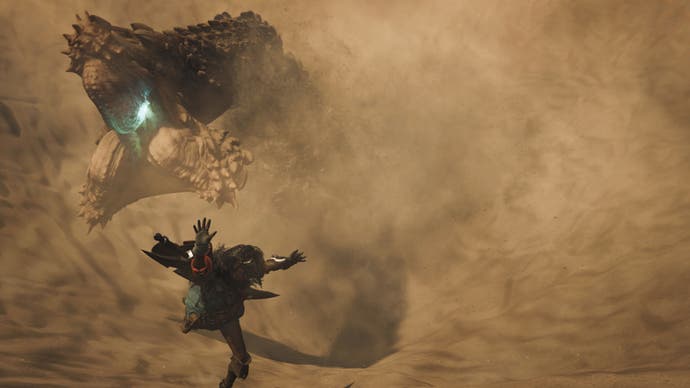 Wilds doesn't beat about the bush: it throws you straight into the xenozoological equivalent of a car chase. | Image credit: Capcom
Wilds doesn't beat about the bush: it throws you straight into the xenozoological equivalent of a car chase. | Image credit: Capcom
Since this is a game mostly about upgrading your gear, the smithy gets a suitably dazzling introduction as Gemma the sexy blacksmith (complete with Capcom trademark exposed midriff) works the forge for you in a flamboyant display that looks less like artisan metalwork and more like the opening number in a Broadway musical about shoeing horses. It's very silly, but this is a game where your cat is a polite colleague who increases your productivity and never shits on your carpet. It is its own warped reality, and you just have to embrace it.
Traversal gets a big shake-up in Wilds with the addition of Raptor-like Wyvern mounts called Seikrets, which is confusing because if you go around telling people that you're partial to riding an animal but it's a secret, you're likely to end up getting a visit from the cops. These mounts are obviously essential for getting across the vast biomes in Wilds, but they also unlock a map's verticality – set paths along craggy outcrops and tree coverage that can cut out long stretches of a journey and also reveal unexplored areas - just like your Palamute mounts did in Monster Hunter Rise. They even come in handy in combat, where you can get up to speed and launch yourself at a beast to inflict massive damage from the air.
Speaking of combat (I mean, we should mention it, given that it's 90 percent of the game), it feels largely similar to Worlds, and is based around the same classic 14 weapons. The big changes here are 'Focus Mode' and 'Wounds'. The former allows you to unleash big flourishes by focusing your attacks on specific body parts. Wounds, on the other hand, glow red when they're ready to strike, and will close up again once you've triggered the requisite animation, so they're not something you can spam. But combat overall is now very much about giving yourself chances for focus attacks as well as just chipping away at a big ol' health bar - a task which is more fun with friends or even strangers, as in the previous game. This time around, though, your SOS beacon can summon a capable team of AI-controlled hunters to aid you, making Wilds far more palatable as a solo experience than Worlds ever was. By extension, your individual playthroughs are also far less at the mercy of that ever so fleeting metric of concurrent players.
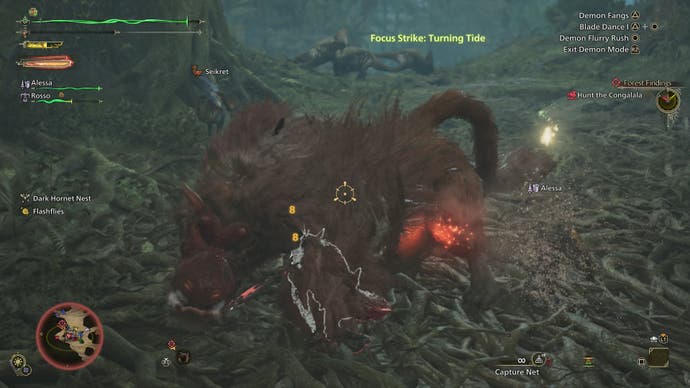 Speaking of beating about the bush, here's a focus attack on a congalala's groin. | Image credit: Capcom
Speaking of beating about the bush, here's a focus attack on a congalala's groin. | Image credit: Capcom
In fact, you can fumble through Wilds' encounters without having to depend on other living players at all. Wilds feels like a much easier time than its predecessors in myriad ways: its systems are more streamlined and less likely to baffle someone used to more conventional third-person action games. And it is, frankly, easier. Cards on the table: I'm pish at Monster Hunter games, and tend to flail my way through them with all the grace of a Great Jagras that’s just swallowed an Aptonoth. But what I played of Wilds barely moved the stress needle. If anything, I often found it breezy to the point of self-doubt – half suspecting that the preview build had some kind of god mode enabled for gormless rubes in plaid shirts. But I think it's far more likely another symptom of Capcom trying to serve two masters with this release.
Easy or not, encounters are highly engaging and fun. The world has a dynamically simulated ecosystem, meaning your quests and boss fights can be interrupted by other animals just wandering in and having a pop themselves. And the varied terrain is much more of a feature in set-piece battles now, with every arena sporting precarious ACME traps that can deal a lot of slapstick damage if you manage to lure your lumbering foe into the right spot.
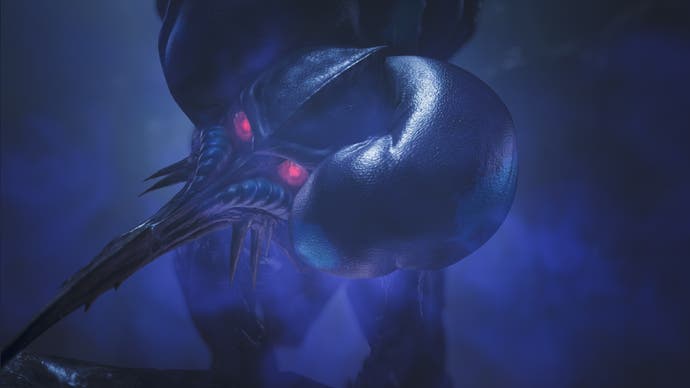 Its vision is based on movement. As in, it sees you and moves to inflict a violent death. | Image credit: Capcom
Its vision is based on movement. As in, it sees you and moves to inflict a violent death. | Image credit: Capcom
From the first six hours, it's clear that Wilds is packed with memorable encounter after memorable encounter, and knowing the trajectory of previous games, I'm pretty confident that this isn't just a case of front-loading the best stuff. We barely scratched the surface of its story, which is a much more important aspect of the game than ever before, with dialogue trees and a fully-voiced protagonist, no less. There are initial encounters with a rich native culture so alien to our Old World characters that they barely have a concept of weaponry, that tantalisingly hint at a wider theme of colonialism with a human cost. Not that Monster Hunter is remotely obliged to have themes, but it's interesting that Wilds is pursuing some narrative heft when none is needed. It feels like an overture (or concession) to fans of your Red Deads and your Witchers, an audience more primed than most to "get" MonHun if they haven't already. Though I would argue that Capcom already made a Monster Hunter game for those people. They called it Dragon's Dogma 2 and you probably slept on it.
Still, it's those people who this preview is ultimately for. Existing Monster Hunter fans have been cursed with a long pre-release cycle for Wilds that has included many previews and first-looks, two public betas of which the second is currently underway, and a steady stream of information from a publisher that is historically more open than most about its upcoming releases. I couldn't possibly tell those people anything that they don't already know, save perhaps for the fact that the public beta's worryingly choppy performance issues are not a concern in the final product if this preview build is anything to go by. We were able to test fidelity and performance modes on a base debug PS5, not the Pro, and both offer consistently good framerates without any glaring compromises. So if the beta did leave you concerned about that, don't be.
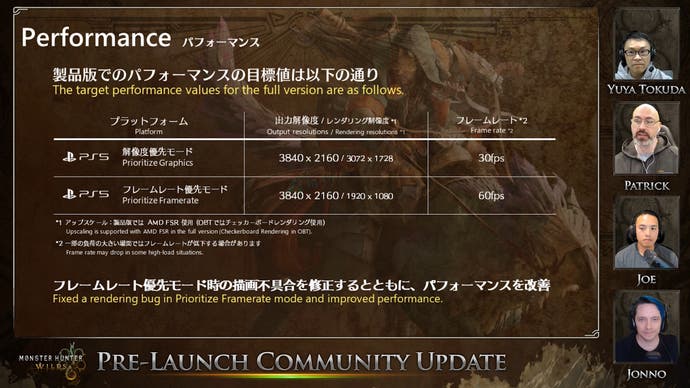 There's been a lot of nervous chat about Wilds' performance based on the public betas, but in our experience it's not representative: the preview build we played was consistently smooth. | Image credit: Capcom
There's been a lot of nervous chat about Wilds' performance based on the public betas, but in our experience it's not representative: the preview build we played was consistently smooth. | Image credit: Capcom
For the MonHun-curious consumer, I recommend caution. The FOMO is real here: Monster Hunter is just one of those things that inspires fandom envy. The people who love it do so vocally and passionately and with an infectious enthusiasm rarely seen elsewhere. But as much as Wilds is eager to roll over and present its tummy to you, it is still a Monster Hunter game, and therefore as marmitey as marmite games come. If you've struggled to get into one in the past, there's nothing fundamentally different about Wilds that's liable to convince you this time.

 9 months ago
146
9 months ago
146

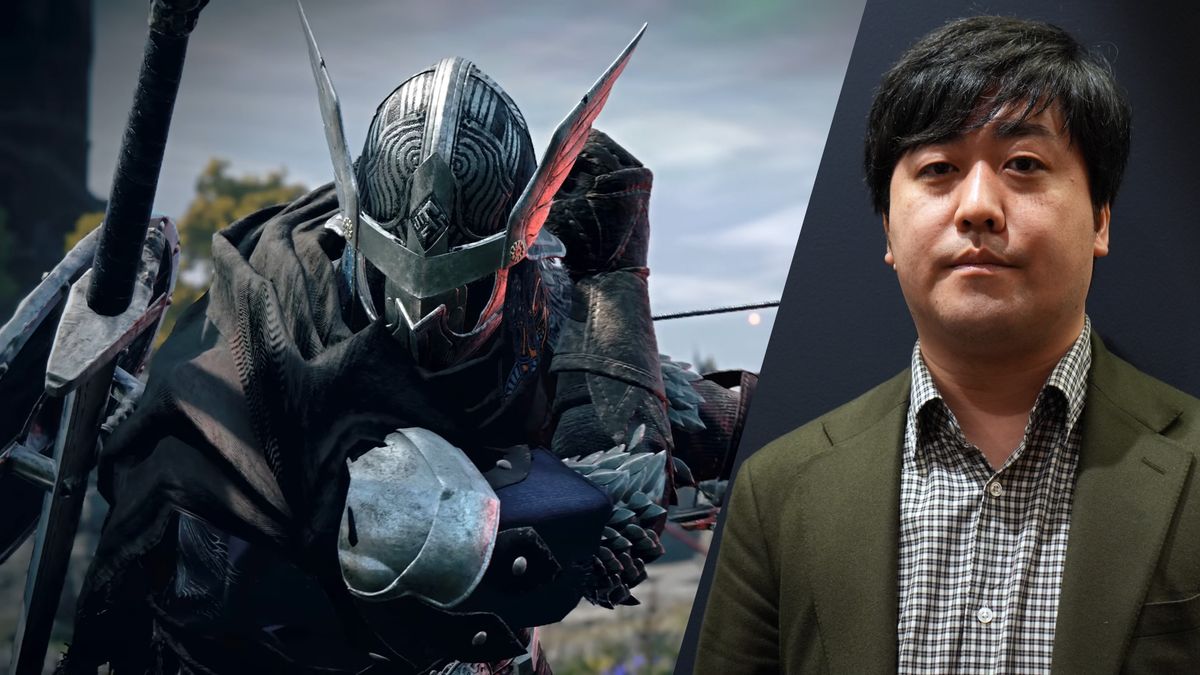
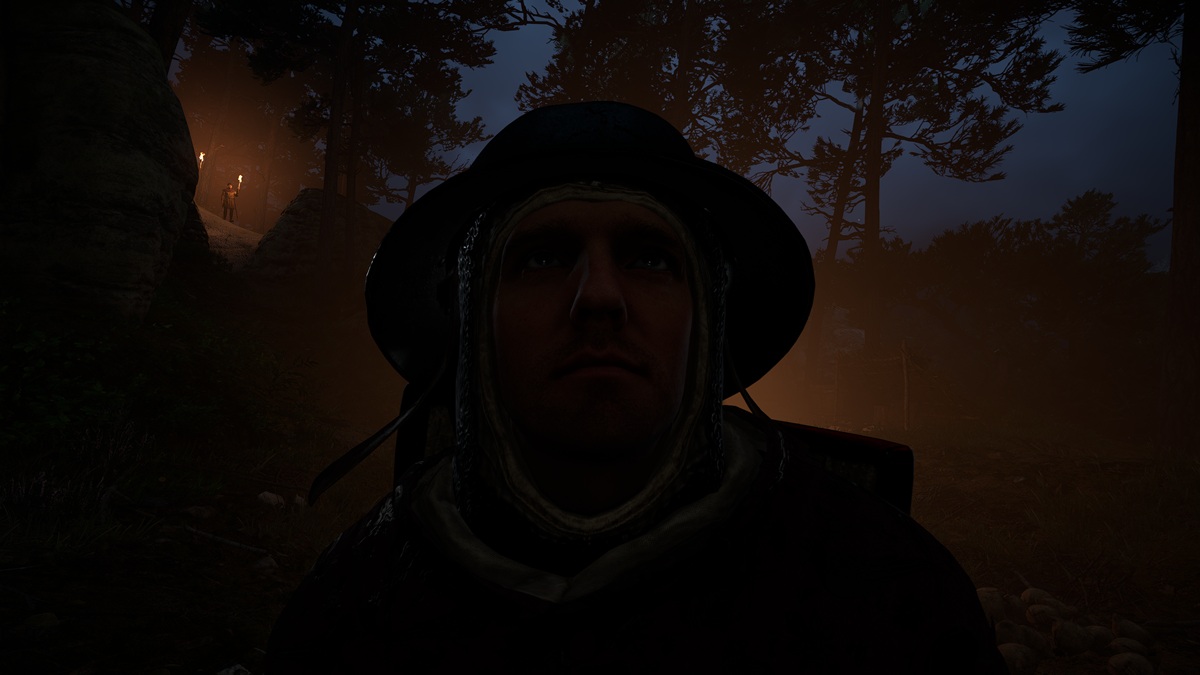
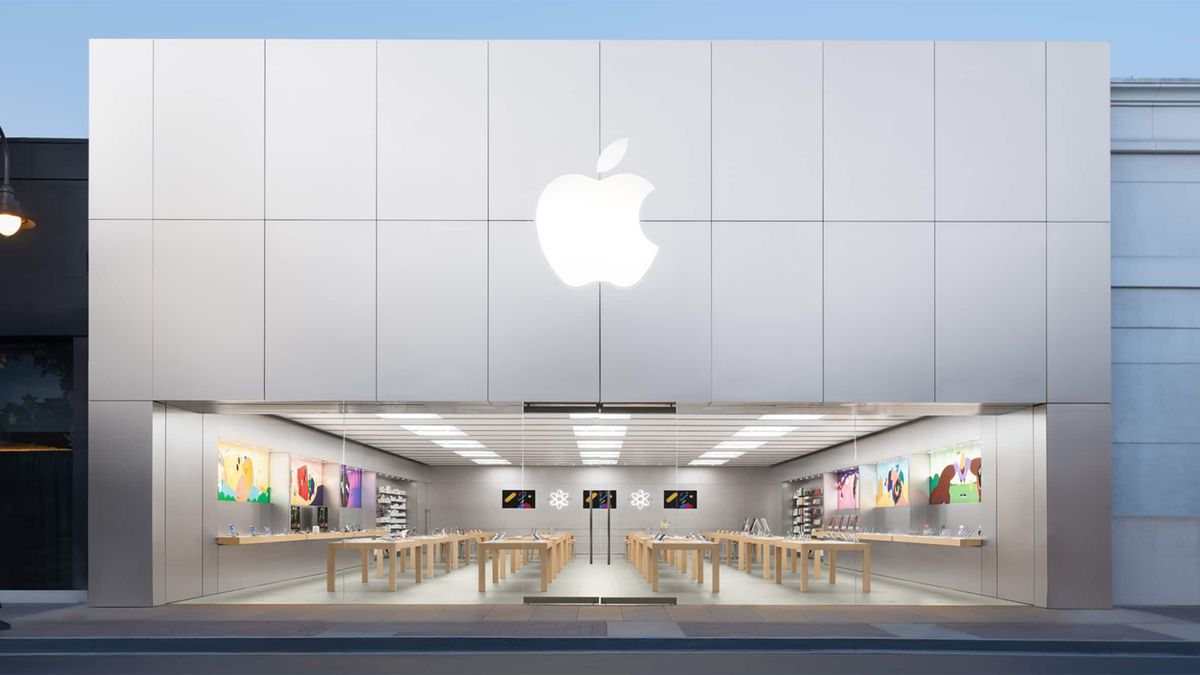
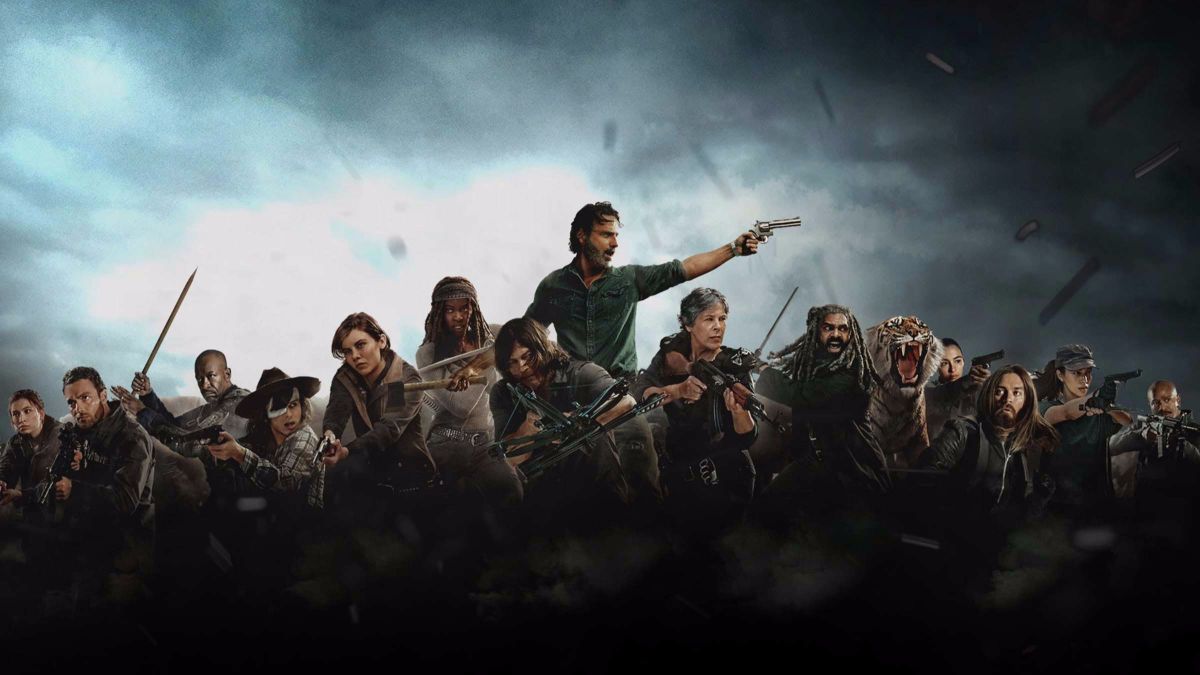

 English (US) ·
English (US) ·